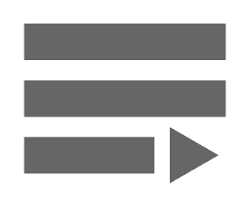Python is the fastest-growing major programming language today,
 It is an object-oriented, high-level programming language.
It is an object-oriented, high-level programming language.- It created in 1991 by Guido van Rossum.
- It is a human-readable language and flexible.
So that, today, I'm gonna introduce this awesome course that would help you to get started with Computer Science and programming using Python.
Computer Science and Programming Using Python
This course series consists of 79 videos as the following:
- Python Basics | Introduction.
- Python Basics | Knowledge.
- Python Basics | Machines
- Python Basics | Languages
- Python Basics | Types
- Python Basics | Variables
- Python Basics | Operators/Branching
- Python Basics | Strings
- Python Basics | Input/Output
- Python Basics | IDEs
- Python Basics | Control Flow
- Python Basics | Iteration
- Python Basics | Guess and Check
- Simple Programs | So Far
- Approximate Solutions
- Simple Programs | Bisection Search
- Simple Programs | Floats and Fractions
- Simple Programs | Newton-Raphson
- Simple Programs | Decomposition and Abstraction
- Simple Programs | Introducing Functions
- Simple Programs | Calling Functions and Scope
- Simple Programs | Keyword Arguments
- Simple Programs | Specification
- Simple Programs | Iteration vs Recursion
- Simple Programs | Inductive Reasoning
- Simple Programs | Towers of Hanoi
- Simple Programs | Fibonacci
- Recursion on Non-Numerics
- Simple Programs | Files
- Structured Types | Tuples
- Structured Types | Lists
- Structured Types | List Operations
- Mutation, Aliasing, and Cloning
- Functions as Objects
- Structured Types | Quick Review
- Structured Types | Dictionaries
- Structured Types | Example with a Dictionary
- Structured Types | Fibonacci and Dictionaries
- Structured Types | Global Variables
- Good Programming Practices | Programming Challenges
- Good Programming Practices | Classes of Tests
- Good Programming Practices | Bugs
- Good Programming Practices | Debugging
- Good Programming Practices | Debugging Example
- Good Programming Practices | Exceptions
- Good Programming Practices | Exceptions Examples
- Good Programming Practices | Exceptions as Control Flow
- Good Programming Practices | Assertions
- Object Oriented Programming | Object Oriented Programming
- Object Oriented Programming | Class Instances
- Object Oriented Programming | Methods
- Object Oriented Programming | Classes Examples
- Object Oriented Programming | Why OOP
- Object Oriented Programming | Hierarchies
- Object Oriented Programming | Class Variables
- Object Oriented Programming | Building a Class
- Object Oriented Programming | Visualizing the Hierarchy
- Object Oriented Programming | Adding Another Class
- Object Oriented Programming | Using Inherited Methods
- Object Oriented Programming | Generators
- Algorithmic Complexity | Program Efficiency
- Algorithmic Complexity | Big Oh Notation
- Algorithmic Complexity | Complexity Classes
- Algorithmic Complexity | Analyzing Complexity
- Algorithmic Complexity | More Analyzing Complexity
- Algorithmic Complexity | Recursion Complexity
- Algorithmic Complexity | Search Algorithms
- Algorithmic Complexity | Bisection Search
- Algorithmic Complexity | Bogo Sort
- Algorithmic Complexity | Bubble Sort
- Algorithmic Complexity | Selection Sort
- Algorithmic Complexity | Merge Sort
- Plotting | Pylab
- Plotting | Plots
- Plotting | Labels
- Plotting | Comparing Plots
- Plotting | Display Details
- Plotting | An Example
- Course Summary
To explore the course playlist, you can click on the Playlist button  on the top right corner in the video window!
on the top right corner in the video window!
Continue learning
Below are some resources to learn python for beginners